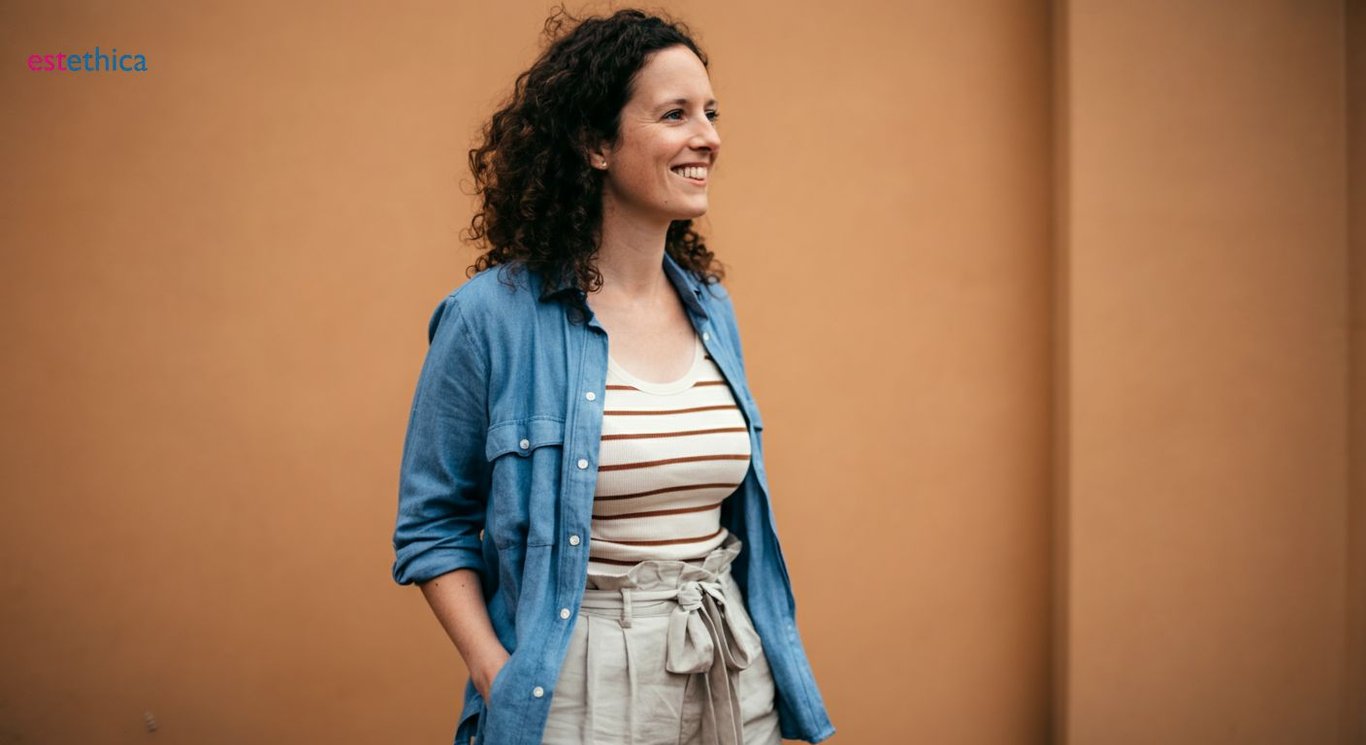Unlocking the Secrets of Eco-Friendly Fashion
Discover the secrets behind sustainable fashion and learn how you can make eco-conscious clothing choices today!
Eco-friendly fashion is more than just a trend; it's a lifestyle choice that reflects a commitment to sustainability and ethics in the fashion industry. The idea of sustainable fashion encompasses a wide range of practices aimed at minimizing the environmental impact of clothing production and consumption. As consumers become increasingly conscious of the environmental and ethical implications of their clothing choices, the demand for eco-friendly alternatives continues to grow. This article serves as a comprehensive guide to understanding the core principles of sustainable fashion, identifying top ethical brands to support, and discovering ways to shop affordably while being eco-conscious.
Understanding Sustainable Fashion: A Beginner's Guide
Exploring the Core Principles of Sustainable Fashion
Sustainable fashion is a transformative approach to clothing production and consumption, emphasizing environmental responsibility and ethical practices. This movement aims to reduce the fashion industry's ecological footprint by promoting eco-friendly clothing and ethical fashion brands. For instance, many brands now use organic cotton, which requires significantly less water than conventional cotton, thereby conserving vital resources.
Moreover, sustainable fashion encourages the use of recycled materials, such as upcycled fashion, which repurposes old garments into new designs. This not only minimizes waste but also fosters creativity and innovation within the industry. Additionally, the rise of vegan leather alternatives offers a cruelty-free option for consumers seeking stylish yet ethical choices.
Key Elements of Sustainable Fashion
- Use of organic and recycled materials to minimize environmental impact.
- Ethical labor practices ensuring fair wages and safe working conditions.
- Promotion of a circular fashion economy to reduce waste and extend garment life.
These elements collectively contribute to a more sustainable and ethical fashion industry, aligning with the growing consumer demand for transparency and responsibility.
Steps to Embrace Sustainable Fashion
- Research and identify ethical fashion brands that align with your values.
- Choose eco-friendly clothing made from sustainable materials.
- Support brands that prioritize ethical labor practices and environmental conservation.
By following these steps, consumers can make informed choices that support a more sustainable future. For more insights on sustainable fashion, explore how estethica is revolutionizing sustainable fashion choices.

Top Ethical Fashion Brands to Support Today
Innovative Brands Leading the Sustainable Fashion Movement
In the realm of sustainable fashion, certain brands stand out for their commitment to eco-friendly clothing and ethical practices. These brands not only prioritize environmental responsibility but also set trends in the fashion industry. For instance, Patagonia is renowned for its dedication to using recycled materials and promoting fair labor practices. Their innovative approach includes the use of organic cotton and recycled polyester, which significantly reduces their carbon footprint.
Another exemplary brand is Stella McCartney, which has been a pioneer in vegan leather alternatives, offering stylish options without compromising on ethics. Their collections often feature upcycled fashion pieces, showcasing creativity while minimizing waste. Additionally, Eileen Fisher emphasizes a circular fashion economy by encouraging customers to return old garments for recycling, thus extending the life cycle of their products.
Key Features of Leading Ethical Fashion Brands
- Commitment to using sustainable materials like organic cotton and recycled fabrics.
- Implementation of ethical labor practices ensuring fair wages and safe working conditions.
- Promotion of innovative solutions such as vegan leather and upcycled fashion.
These brands exemplify how the fashion industry can evolve towards more sustainable and ethical practices, aligning with consumer demands for transparency and responsibility.
How to Identify and Support Ethical Fashion Brands
- Research brand values and practices to ensure alignment with sustainable principles.
- Look for certifications such as Fair Trade or Global Organic Textile Standard (GOTS).
- Support brands that actively engage in environmental conservation and ethical labor initiatives.
By choosing to support these brands, consumers can contribute to a more sustainable future while enjoying high-quality, stylish clothing. This shift not only benefits the environment but also promotes a more ethical and responsible fashion industry.

How to Shop for Affordable Eco-Friendly Clothing
Strategies for Finding Budget-Friendly Sustainable Fashion
Shopping for sustainable fashion doesn't have to break the bank. By adopting strategic approaches, consumers can find eco-friendly clothing that aligns with their budget. One effective method is to explore second-hand shops and thrift stores, which often carry high-quality sustainable apparel at a fraction of the original price. These stores not only offer unique pieces but also support the circular fashion economy by extending the life of garments.
Another approach is to look for sales and discounts from ethical fashion brands. Many brands offer seasonal promotions, making it easier to purchase eco-friendly clothing without overspending. Additionally, subscribing to newsletters from these brands can provide early access to exclusive deals and new collections.
Tips for Shopping Sustainably on a Budget
- Explore online platforms dedicated to second-hand sustainable fashion.
- Attend local swap events to exchange clothing with others.
- DIY upcycling projects to refresh old garments creatively.
These strategies not only make sustainable fashion more accessible but also encourage creativity and community engagement. By incorporating these practices, consumers can enjoy stylish and ethical clothing without compromising their financial goals.
Navigating the Price of Eco-Friendly Clothing
- Identify key pieces that offer versatility and longevity.
- Prioritize quality over quantity to ensure lasting wear.
- Invest in timeless styles that transcend seasonal trends.
By focusing on these aspects, shoppers can build a sustainable wardrobe that is both cost-effective and environmentally conscious. This approach not only supports ethical fashion brands but also promotes a more mindful consumption pattern, aligning with the principles of sustainable fashion.

Exploring the Circular Fashion Economy
Understanding the Circular Fashion Model
The circular fashion economy is a transformative approach that redefines how clothing is produced, consumed, and disposed of. Unlike the traditional linear model, which follows a 'take-make-dispose' pattern, the circular model emphasizes sustainability by keeping garments in use for as long as possible. This approach not only reduces waste but also conserves resources, aligning with the principles of sustainable fashion.
One example of the circular fashion model in action is the use of recycled materials to create new garments. Brands like H&M have introduced initiatives where customers can return old clothes for recycling, which are then transformed into new collections. This process not only minimizes environmental impact but also promotes eco-friendly clothing options.
Benefits of the Circular Fashion Economy
- Reduces textile waste by extending the lifecycle of garments.
- Encourages innovation in sustainable apparel design.
- Promotes ethical fashion brands committed to environmental responsibility.
These benefits highlight the potential of the circular fashion economy to revolutionize the industry, making it more sustainable and ethical. By embracing this model, brands can meet the growing consumer demand for transparency and responsibility.
Implementing Circular Fashion Practices
- Design garments with longevity and recyclability in mind.
- Encourage consumers to participate in clothing take-back programs.
- Invest in technologies that facilitate garment recycling and upcycling.
By adopting these practices, the fashion industry can transition towards a more circular economy, reducing its environmental footprint and promoting sustainable fashion. This shift not only benefits the planet but also aligns with the values of eco-conscious consumers.
Innovative Approaches in Sustainable Fashion
Affordable Eco-Friendly Fashion for Conscious Consumers
Frequently Asked Questions
What are the core principles of sustainable fashion?
How can I find and support ethical fashion brands?
What strategies can I use to shop for affordable eco-friendly clothing?
What is the circular fashion economy, and how does it benefit the environment?
How can I build a sustainable wardrobe on a budget?
Discover the path to 'Healthy Beauty' with estethica's expert care. Call now for your free consultation and take the first step towards a more confident you!
📞 Call for Your Free Consultation